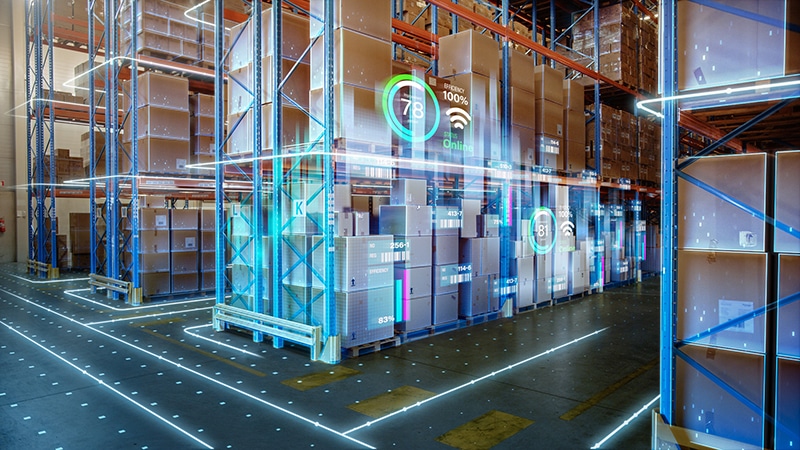How Artificial Intelligence Will Impact the Supply Chain in 2024

From warehousing to risk assessment, here’s how generative artificial intelligence solutions could help address supply chain complexity and resiliency challenges in 2024 and beyond.
As the popularity of generative artificial intelligence (AI) solutions grew in 2023, stakeholders ranging from the boardroom to the end consumer began wondering how AI could help address supply chain complexity and resiliency problems. But you may be surprised to learn the supply chain has used AI in some form since the mid-20th century.
AI technology really started to take off in the early 2000s as more companies began feeding machine learning algorithms with mountains of historical data, resulting in better predictions about consumer demand, inventory management, and market risks. Fast forward to the mid-2010s, and AI software started to become commonplace for its role in powering robotic arms and autonomous vehicles in warehouses.
However, those are all examples of traditional AI. Traditional AI solutions allow companies to program repeatable tasks and scenarios with minimal variability, such as picking up a tote and bringing it to a packing station.
Generative AI has the potential to get more creative, own more processes, and help stakeholders make better decisions based on real-time data.
Generative AI in 2024
Go down the AI rabbit hole on Reddit or Facebook, and you might come across arguments about how generative AI image generators or content producers are unethical because they mimic the style and capabilities of real artists. However, the ethical implications are less sticky in the global supply chain. Suppose an AI solution can learn from thousands of historical decisions made by real-world supply chain practitioners. Then, automating basic supply chain and logistics functions in an industry facing a years-long talent shortage becomes possible.
AI won’t change the supply chain overnight, but we should see steady technological progress in the next few years. Here are some of the things we might see from supply chain AI solutions in 2024:
- Better forecasting. Until the COVID-19 pandemic, forecasts were largely created based on historical data (basically, we hoped people would keep doing what they always did)—but those models no longer work. Generative AI lets companies analyze their full pool of historical data and stack it against other factors, such as inventory data, supplier data, distribution networks, and market trends, to create more accurate and resilient forecasts.
- Advanced warehouse robotics and automation. Generative AI will let robots handle more complex tasks than simple picking, offering support across sorting, returns management, and more. Additionally, modern AI software can analyze warehouse layouts and processes to reduce travel distances for robots and employees, optimize workforce planning, and orchestrate optimized interactions between workers and robots to improve warehouse efficiencies.
- Improved risk management. With generative AI, risk assessments will go beyond basic seasonal or templated event models by allowing supply chain practitioners to model specific events (like hurricanes, wildfires, recessions, and yes, even pandemics) to see what risks they pose to the organization’s supply chain.
Barriers to AI
You might remember several years ago, everyone thought blockchain would reshape the supply chain overnight. Yet, despite several successful pilot programs, progress for blockchain supply chain solutions has slowed significantly because of a lack of standardization.
Similarly, generative AI technology has much potential but is also relatively new. While it does seem inevitable AI will play a prominent role in the future of the supply chain, only time will tell exactly what that role looks like.

